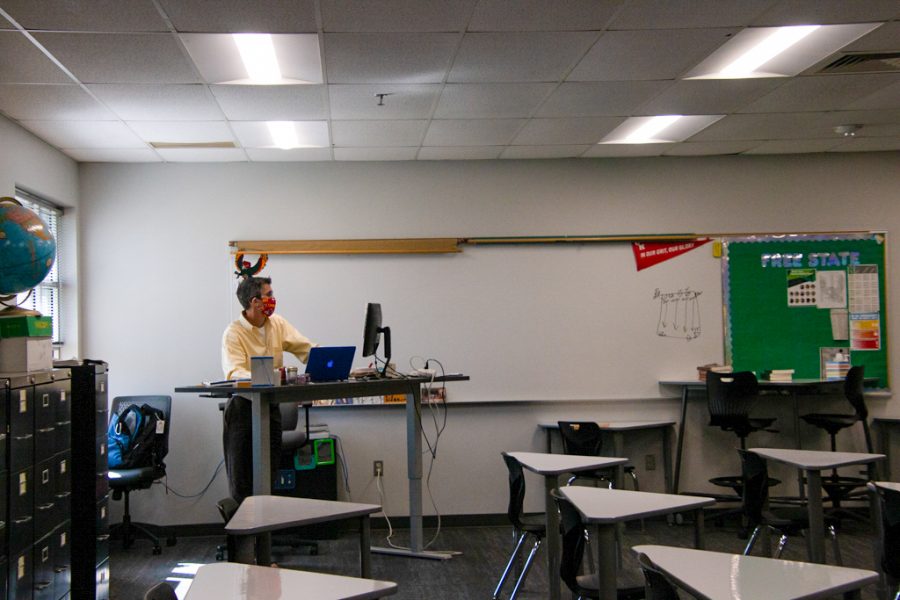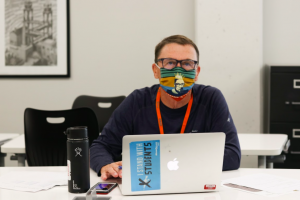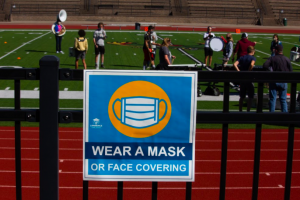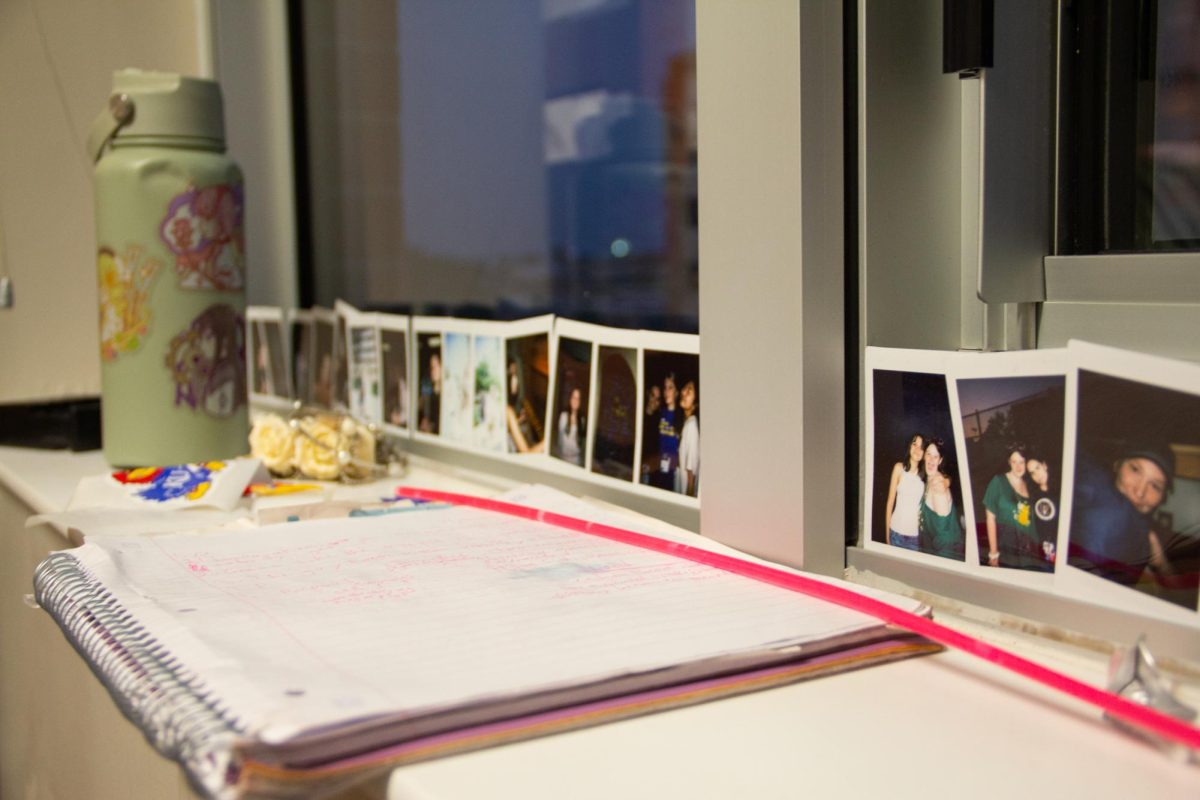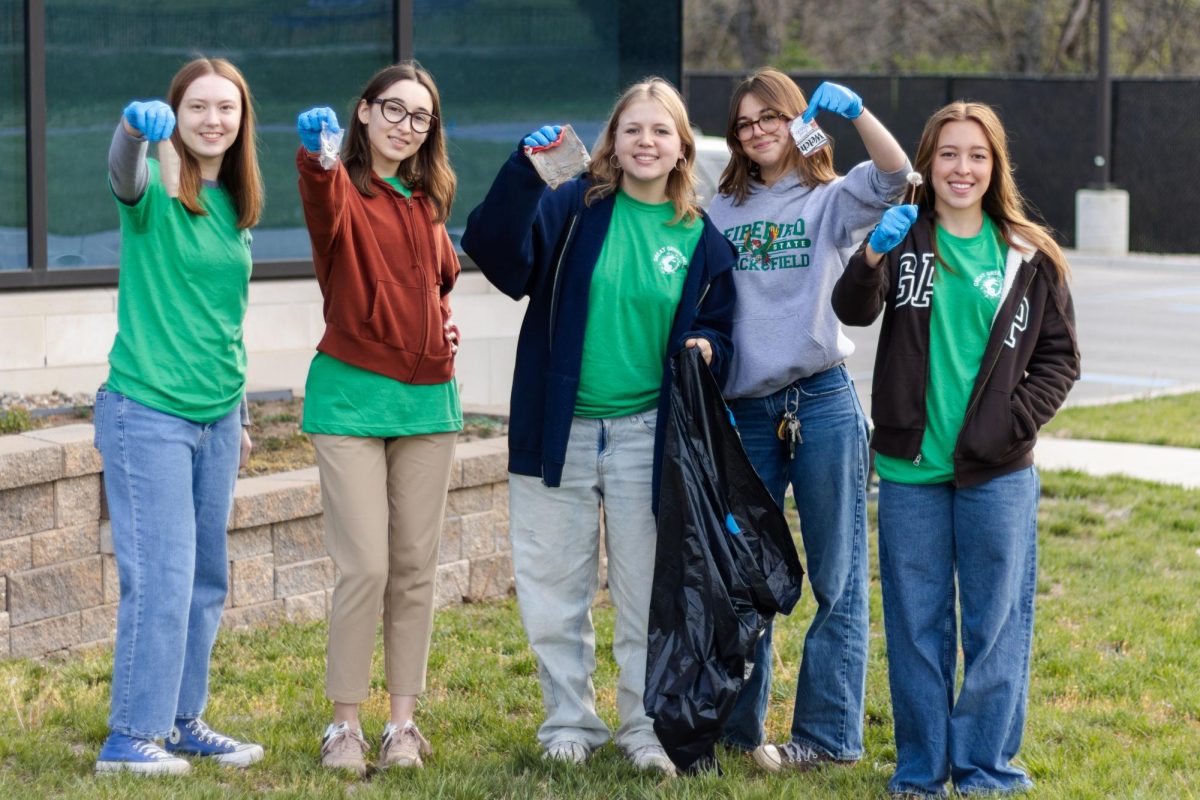Loading Connections: Teachers share experiences with students online
English teacher Samuel Rabiola uses his classless seventh hour to tackle some grading before the school day is over.
November 3, 2020
With the transition to partially online schooling, teachers like AP Government and Politics teacher Jeffery Haas are having to rethink how they go about teaching.
“I don’t have the highest digital prowess,” Haas said. “One advantage is that I know a lot more than I did last March about how to manipulate different kinds of things on computers that I don’t have a natural feel for.”
Though Haas sees it as a good learning opportunity, adapting to the curriculum hasn’t all been easy.
Alyssa Barratt, who teaches geometry and advanced algebra II, has had issues with the workload of going digital.
“I would definitely say the disadvantage is the increased workload — having to recreate everything in a digital format for my kids, since we can’t do paper and pencil,” Barratt said. “That’s really hard in math.”
This is not the only issue, as students and faculty also miss out on social interaction that they would normally get in person. This lack of socialization is affecting teachers and how they approach their workspaces for online learning.
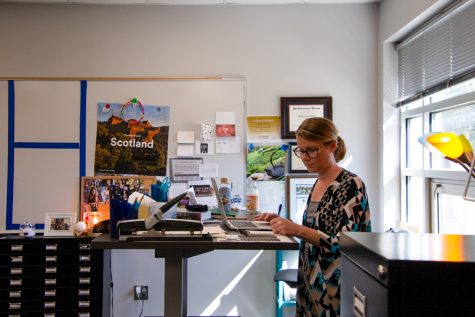
“School is really lonely,” teacher Laura Woolfolk said. “It’s sad. There’s some teachers that typically work all the time who I’m familiar with seeing. The only time that we visit is in passing in the hallway with masks on. So, without students, schools are very lonely places.”
Woolfolk, who teaches American Literature and Comparative Mythology, opens her classroom up to students for lunch. This allows her to build on relationships with students and lets them come in and ask questions.
“I do worry about the kids who maybe don’t have somebody behind them, checking on them, pushing them,” Woolfolk said. “I want to applaud all of those people who are doing what they’re supposed to be doing.”
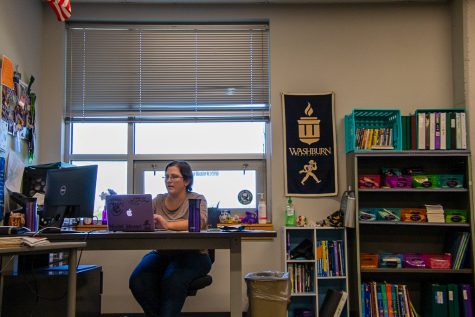
English and AVID teacher, Andrew Martin, believes that a strong teacher-student relationship can impact the learning abilities of those students. With a lack of face-to-face interaction and passing period conversations, it’s harder to build these types of relationships.
“I can teach content all day,” Andrew Martin said. “But relationships really make it hit home for a lot of students. I can’t personally help a student with an issue that they’re having on an assignment or counsel them on an issue they’re having in their personal life as easily through Webex.”



